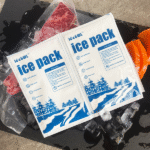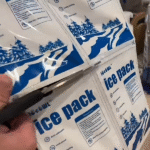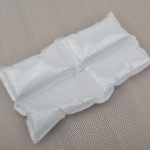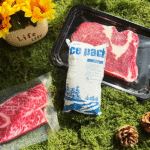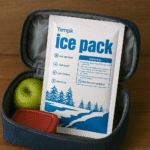Updated on 16 Novembre 2025, this guide explains how a cold chain works—from harvest or manufacture through storage, distribution and delivery—so you can keep temperature sensitive goods safe and compliant. Cold chains underpin global trade, with the market projected to climb from about USD 248 milliards en 2020 to more than USD 410 milliards 2028. You’ll learn the key stages, equipment and innovations that make modern cold chains reliable, and discover actionable tips to optimise your operations in 2025.
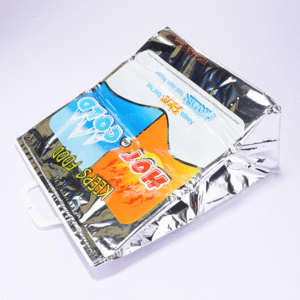
What is a cold chain and why does it matter? Understand the concept and learn why it’s critical for preserving quality across industries.
How do the main stages of a cold chain work together? Explore the step by step process—from pre cooling to last mile delivery—and discover the roles of packaging, storage and transport.
Which temperature ranges apply to different products? Get a handy overview of temperature classes and learn how they affect goods like produce, laitier, biologics and frozen food.
What technologies keep the cold chain intact? Find out how sensors, trackers, packs de gel, dry ice and reefers maintain conditions and support real time visibility.
What are the common challenges and how can you address them? Learn practical solutions for temperature excursions, visibility gaps, regulatory compliance and sustainability.
What trends are shaping the cold chain in 2025? Discover how IoT, IA, automation and green refrigeration are transforming operations.
What Is a Cold Chain and Why Do You Need One?
A cold chain is a continuous, temperature controlled pathway that preserves perishable goods from origin to destination. It starts the moment a vaccine, carton of eggs or tray of berries leaves the production site and ends when the customer takes possession. Unlike a single refrigerator or freezer, a cold chain is a network of refrigerated facilities, camions, containers and monitoring systems designed to keep products within their required temperature range through every link of the journey.
Keeping this chain unbroken matters because many products degrade quickly when temperatures drift. Fresh produce loses moisture and firmness; dairy spoils; pharmaceuticals lose potency; biologics can become useless; and frozen foods develop ice crystals or off flavours. Even short excursions can ruin an entire batch, leading to costly recalls or health risks. That’s why the cold chain market is expanding rapidly: global cold chain logistics revenue jumped from roughly USD 248 milliards en 2020 à un montant estimé en USD 436 milliards 2025, and it’s projected to surpass USD 410 milliards 2028 with growth averaging 15 % par année. Investments in reliable cold chains reduce waste, protect consumers and open new markets for producers.
Core Elements of the Cold Chain Process
Four major components make up every effective cold chain: cooling systems, rangement froid, cold transport et cold processing/distribution. Each element plays a distinct role, yet they must work together seamlessly.
| Scène | Description | Pourquoi ça compte |
| Cooling systems | Equipment that generates the right temperature for processing, storage and transport. This includes compressors, condensers, evaporators and controls installed in warehouses, reefers or portable units. | Produces and maintains the cold or cool environment needed to preserve product quality. |
| Cold storage | Facilities or mobile units that hold goods for extended periods. This includes walk in coolers, cold rooms, blast freezers, refrigerated containers and ultra low temperature freezers. | Provides a buffer between production and distribution and ensures steady conditions for goods with varied shelf lives. |
| Cold transport | Vehicles such as refrigerated trucks (frigorifiques), wagons, air freight containers and maritime reefer containers that maintain stable conditions while goods travel between sites. | Keeps products within their temperature range during transit and reduces the risk of exposure at transfer points. |
| Cold processing & distribution | Facilities for processing, sorting and packing as well as distribution centres and last mile delivery services. | Ensures goods are handled hygienically, labelled correctly and delivered quickly to retailers or end consumers. |
How Do the Main Stages of a Cold Chain Work Together?
A cold chain functions like a relay race—each stage must pass the baton (your product) without losing momentum (contrôle de la température). Below we break down the process step by step, highlighting what happens at each link and how you can keep control.
Étape 1: Preparation and Pre Cooling
Once goods leave the field or production line, Ils ont besoin d'être pre cooled to remove residual heat. Par exemple, freshly harvested strawberries can retain field heat that accelerates spoilage; quickly lowering their temperature prevents mould and preserves texture. In pharmaceutical manufacturing, vials may be cooled to 2–8 °C immediately after filling to maintain stability. At this stage:
Packaging matters: Choose packaging suited to the product’s temperature class. Packs de gel, phase change materials or vacuum insulated panels (Vips) help maintain conditions during the first transfer.
Ensure proper documentation: Record lot numbers, packaging materials and pre cooling times. This documentation supports traceability and regulatory compliance.
Consider humidity and atmosphere: Some products require modified atmosphere packaging or dehumidification to prolong shelf life.
Étape 2: Storage and Staging
After pre cooling, les marchandises entrent rangement froid. Modern facilities are divided into temperature zones—chilled (0–4 °C), réfrigéré (2–8 ° C), congelé (–18 °C) and ultra low (en dessous de –70 °C) depending on the product. Selon les directives de l'industrie, controlled room temperature is 15–25 °C, refrigerated goods require 2–8 °C, typical frozen goods remain around –20 °C, and ultra cold products like certain biologics need –70 °C or lower. Pendant le stockage:
Monitor conditions continuously: Capteurs, data loggers and warehouse management systems track temperature, humidity and even vibration. Real time alerts allow rapid response to deviations.
Use high density racking and insulation: Efficient storage design reduces heat exchange and maximises capacity. High speed doors minimise warm air infiltration during loading.
Implement first expiring, first out (FEFO) flux de travail: Rotating stock prevents older items from sitting too long and reduces waste.
Étape 3: Inland Transportation
The goods are then loaded onto camions frigorifiques, railcars or reefer containers. Reefer units are insulated containers with an integrated refrigeration system that circulates cold air and can even warm cargo if needed. Key considerations during this stage:
Pre condition the reefer: Cool the truck or container before loading. A warm container will delay reaching the target temperature and risk condensation on packaging.
Seal the load properly: Proper stowage ensures air can circulate around each pallet. Overfilling reduces airflow and leads to hot spots.
Enable real time tracking: Modern GPS enabled sensors monitor location and temperature simultaneously, sending alerts if parameters drift. This connectivity is critical because many cold chain failures occur during transit.
Étape 4: Port and Maritime Transit (for international shipments)
For long distance exports, goods often move through ports and cross the ocean in standard ISO reefer containers. According to reefer management experts, the cold chain journey includes booking transport, conducting inland transport, storing goods at a terminal, loading onto the vessel, crossing the sea, déchargement, clearing customs and forwarding the goods to inland destinations. During this period:
Ensure customs documentation: Each country has specific requirements for temperature sensitive products. Having the correct permits prevents delays that could compromise temperature control.
Use reefers with power redundancy: Ships connect reefers to onboard power, but units must also maintain temperature during transfers. Portable power supplies or eutectic plates help maintain conditions during port handling.
Planifier les retards: Weather or port congestion can extend transit times. Building a buffer by using more robust packaging or pre cooling to lower temperatures can help maintain product integrity.
Étape 5: Last Mile Distribution and Delivery
The final leg—from distribution hub to retailer or patient—is often the riskiest. Smaller vans or bikes may navigate urban traffic or remote rural roads. Boîtes isolées, gel packs and eutectic plates maintain conditions for a few hours without power. Effective last mile strategies include:
Minimise door openings: Each time a delivery vehicle door opens, L'air chaud entre. Efficient route planning and clear protocols reduce exposure.
Use temperature controlled packaging: For short deliveries, passive solutions (packs de gel, quilts) maintain temperature without electricity. For longer distances or high value shipments, active solutions (portable refrigerators) ensure precise control.
Provide delivery confirmations: Digital proof of delivery and temperature logs build trust with customers and support regulatory audits.
Exemple du monde réel: Dans 2025 the United Nations Children’s Fund (UNICEF) shipped more than half a million vaccine doses by sea rather than by air. By using reefer containers and careful planning, they reduced transport emissions by 90 % and lowered costs by 50 %, illustrating how cold chain optimisation can be both sustainable and economical.
Temperature Classes and Product Examples
Different commodities have specific temperature windows to preserve quality. The table below summarises common classes and their applications.
| Temperature class | Gamme | Produits typiques | Pourquoi ça compte |
| Température ambiante contrôlée | 15–25 ° C (59–77 °F) | Many pharmaceuticals and health products | Prevents heat or cold damage for medicines that are stable at ambient conditions. |
| Réfrigéré | 2–8 ° C (36–46 °F) | Vaccins, laitier, produits frais | Slows microbial growth, preserves nutrients and potency. |
| Congelé | Around –20 °C (–4 °F) | Viande, fruit de mer, aliments surgelés | Extends shelf life by halting microbial activity and enzymatic reactions. |
| Très froid | En dessous de –70 °C (–94 °F) | Certain biologics and specialty vaccines | Maintains stability for sensitive molecules like mRNA vaccines. |
Technologies and Tools That Keep the Cold Chain Intact
Cold chain integrity relies on both active and passive systems. Here we explain the most common technologies, what they do and when to use them.
Passive Cooling Solutions
Passive systems do not use electricity; they rely on materials that absorb or release heat. Examples include:
Packs de gel: Flexible pouches filled with gel that freeze or refrigerate at specific temperatures and gradually release cold as they thaw. They are widely used for chilled shipments (2–8 ° C).
Glace sèche: Solid carbon dioxide at around –80 °C. It sublimates into gas rather than melting, making it ideal for keeping items frozen during long trips. It’s often used for frozen foods, pharmaceuticals or hazardous materials.
Eutectic plates (cold plates): Rigid panels filled with a phase change liquid. These plates freeze and thaw repeatedly, providing reusable cold sources for delivery vehicles or portable coolers.
Quilts: Insulated blankets that wrap around pallets or containers to buffer against temperature swings during transit and maintain product temperature.
Passive solutions are cost effective and great for short distance or last mile deliveries but have limited run times. For long journeys or high value cargo, active systems offer more control.
Active Cooling and Transport
Active systems use mechanical refrigeration or other energy sources to maintain temperatures. Key options include:
Reefer containers: ISO containers with built in refrigeration units that run on electric or diesel power. They maintain precise temperature and humidity and are essential for long sea voyages or intermodal transport.
Refrigerated trucks and vans: Road vehicles with insulated compartments and onboard refrigeration units. Hybrid electric reefers introduced in recent years reduce fuel consumption and emissions while maintaining reliability.
Liquid nitrogen systems: Used for ultra low temperatures (–196 °C) when shipping biological samples or organs. These systems are specialised and require careful handling.
Smart boxes and self refrigerated units: New packaging boxes incorporate built in refrigeration powered by batteries or solar panels. These “smart boxes” can hold multiple temperature zones for mixed shipments and provide real time data logging.
Real Time Monitoring and IoT
Monitoring technologies form the nervous system of the cold chain. Without data, you can’t verify compliance or react to issues. Dans 2022 the cold chain monitoring market was about USD 5.3 billion and is expected to reach USD 10.2 milliards 2026, with analysts projecting a compound annual growth rate (TCAC) of roughly 23 % depuis 2025 à 2030.
Important tools include:
Enregistreurs de données: Compact devices placed inside packages or pallets that record temperature at set intervals. They provide a detailed record for audits but only offer data after delivery.
IoT sensors and asset trackers: Connected devices that continuously transmit temperature, données d'humidité et de localisation. Modern trackers combine GPS with sensors, allowing real time visibility into cargo conditions. If a parameter drifts, alerts prompt corrective actions.
RFID and BLE tags: Short range wireless tags that hold temperature and event data. When scanned at checkpoints, they update central systems, enabling automated logging without opening packages.
Predictive analytics and AI platforms: Software that analyses sensor data to forecast demand, optimise routes, anticipate equipment maintenance and identify patterns in temperature excursions.
These tools do more than just record numbers; they empower you to make proactive decisions, reduce waste and satisfy regulators who require detailed temperature logs.
Smart Packaging and Sustainable Innovations
Emerging technologies are making cold chains smarter and greener. Some noteworthy developments include:
Reusable and reusable packaging: Containers with built in IoT sensors that can be used multiple times, réduire les déchets et les coûts.
Isolation biodégradable: Materials derived from plant fibres provide insulation comparable to polystyrene but decompose naturally.
Self refrigerated smart boxes: Portable units with integrated cooling and multiple temperature compartments, powered by lithium batteries or solar panels, allow mixed temperature shipments.
Closed loop pooling systems: Logistics providers now rent out temperature controlled containers and boxes; after delivery, they are collected, désinfecté et réutilisé, reducing the need for single use packaging.
Renewable energy and green refrigeration: Facilities are fitting solar panels and switching to natural refrigerants (like CO₂ or ammonia) to reduce greenhouse gas emissions. Electric reefers and hybrid vehicles further cut fuel use.
Common Challenges and Practical Solutions
Maintaining an unbroken cold chain is challenging. Here are the main pain points identified by logistics providers and customers, with solutions you can implement.
Défi: Maintaining Precise Environmental Conditions
Even short temperature deviations can ruin vaccines, seafood or flowers. Fluctuations occur during loading, unloading or equipment failure.
Solutions:
Invest in real time monitoring: Use IoT sensors and asset trackers to watch temperature and humidity continuously; set up automated alerts for deviations so you can intervene quickly.
Validate packaging and equipment: Conduct ambient profile studies to test packaging against expected weather conditions. Validate reefer units to ensure they perform under real world loads.
Use pre cooling and proper loading: Always bring products and containers to target temperature before loading; maintain adequate airflow between pallets.
Défi: Lack of Real Time Visibility
Some operations still rely on manual logs or periodic checks. Without continuous visibility, you may only discover a problem after goods arrive, causing waste and non compliance.
Solutions:
Adopt connected sensors: Deploy IoT devices that send temperature and location data to a central dashboard. Look for trackers that combine GPS, cellular and environmental sensors.
Intégrer les systèmes: Connect temperature data with your warehouse management and transportation management systems. This integration eliminates data silos and provides end to end visibility.
Set up dashboards and alerts: Use software that visualises data in real time and notifies you when readings exceed thresholds, enabling rapid decision making.
Défi: Regulatory Compliance and Documentation
Food and pharmaceutical supply chains must adhere to regulations like FSMA, WHO guidelines and Good Distribution Practices. Documentation gaps can lead to fines or rejected shipments.
Solutions:
Implement automated record keeping: IoT devices automatically log temperature and location data, creating tamper proof audit trails that satisfy inspectors.
Former le personnel: Educate staff on regulatory requirements and standard operating procedures (Sops). Provide checklists and quick references to ensure procedures are followed consistently.
Effectuer des audits réguliers: Schedule internal and external audits to verify compliance and identify areas for improvement.
Défi: Infrastructure and Capacity Constraints
Rapid urbanisation and growing demand can strain cold chain capacity. Finding or building enough cold storage near consumption centres can be difficult, and there is often a shortage of trained drivers or space for refrigerated vehicles.
Solutions:
Use modular and mobile cold rooms: Deploy portable cold rooms or refrigerated containers to expand capacity quickly during peak seasons or emergencies.
Optimise inventory: Implement advanced forecasting and inventory management to reduce unnecessary storage time and free up space.
Partenaire stratégique: Consider outsourcing to third party logistics providers (3Pls) with established cold chain networks when building new facilities is not feasible.
Défi: Rising Costs and Energy Consumption
Les opérations de la chaîne du froid sont gourmandes en énergie. Camions frigorifiques, freezers and active packaging drive up costs, and energy price fluctuations affect margins.
Solutions:
Invest in energy efficient equipment: Hybrid and electric reefers, variable speed compressors and well insulated facilities reduce power use.
Leverage renewable energy: Install solar panels or purchase green electricity to offset carbon emissions and reduce long term energy costs.
Optimise routes: Use AI powered route optimisation to cut fuel consumption and reduce the time goods spend in transit.
Défi: Last Mile Complexity
The final delivery to stores, hospitals or homes is often fraught with traffic, varied handling requirements and small time windows.
Solutions:
Use micro fulfilment hubs: Locate small cold rooms close to dense population areas to shorten delivery distances.
Standardise packaging: Adopt easy to handle insulated shippers for home deliveries and ensure drivers understand handling protocols.
Coordinate deliveries: Offer delivery slots that align with customer schedules and consolidate deliveries to reduce trips.
Défi: Data Overload and System Integration
Modern cold chains generate huge volumes of data from sensors, telematics and management systems. Integrating and analysing this data can be overwhelming.
Solutions:
Choose open platforms: Invest in software that accepts data from multiple devices and produces unified dashboards.
Use predictive analytics: Employ AI tools to identify patterns, predict equipment failures and recommend route adjustments.
Train staff in data literacy: Empower your team to interpret data, enabling continuous improvement and better decision making.
Défi: Durabilité et impact environnemental
Cold chain operations often use refrigerants with high global warming potential and consume significant energy. Customers and regulators demand greener practices.
Solutions:
Switch to natural refrigerants: Ammonia, CO₂ or hydrocarbons have lower climate impact than synthetic refrigerants.
Adoptez des emballages réutilisables: Closed loop pooling and biodegradable insulation reduce waste.
Raise frozen storage setpoints: Studies suggest that increasing the setpoint of frozen storage from –18 °C to –15 °C can cut energy consumption without affecting product quality.
Track emissions: Use analytics to measure carbon footprint and publish sustainability reports to meet stakeholder expectations.
Étude de cas: New Zealand’s Cold Chain and Economic Impact
Cold chains aren’t only about technology; they shape national economies. In New Zealand, à peu près 45 % of all exports are food products and 60 % of those are transported in refrigerated form. The country’s isolation has driven innovations in refrigeration, making it a pioneer in cold chain practices. Par exemple:
Beef and lamb exports rely heavily on frozen storage to extend shelf life, yet about 5 % of beef and up to 20 % of lamb is exported chilled, requiring ultra precise temperature control.
Dairy exports like butter use frozen storage to reduce lipid oxidation.
Fresh fruits such as kiwifruit, apples and avocados are shipped via maritime reefer containers; dans 2016 sur 10,500 conteneurs réfrigérés were needed to export kiwifruit to 58 pays.
These figures highlight the importance of robust cold chain infrastructure. New Zealand’s success demonstrates that investing in cold storage, monitoring and logistics can unlock export potential and support economic growth.
2025 Trends and Innovations in Cold Chain Operations
The cold chain is evolving quickly. Several macro trends and technological advances are shaping how companies manage perishable goods today. Understanding these shifts helps you plan investments and stay competitive.
Aperçu de la tendance
Growing Demand and E Commerce: Rising populations, higher living standards and the popularity of online grocery and meal kits are boosting consumption of refrigerated goods. To keep up, logistics providers are expanding fleets of refrigerated trucks and building urban cold storage facilities.
Advanced IoT and Connectivity: Real time sensors are becoming standard equipment. New asset trackers combine GPS and environmental sensors to provide uninterrupted visibility.
Data Analytics and AI: Predictive tools analyse data from connected devices to forecast demand, optimise routes and anticipate equipment maintenance.
Automatisation et robotique: Systèmes automatisés de stockage/récupération, conveyor belts and robotics speed up loading/unloading, reduce human error and help facilities operate around the clock.
Regulatory Pressure and Food Safety: Authorities have tightened rules on temperature logs and traceability. Compliance standards like FSMA, EU GDP and WHO GDP demand meticulous documentation.
Durabilité et efficacité énergétique: Stakeholders demand greener operations. Companies are exploring eco friendly refrigerants, solar panels, electric reefers and energy saving strategies.
Derniers développements en un coup d'œil
Real time visibility devices: Remote tracking units with cellular or satellite connectivity are proliferating, giving constant updates on cargo condition.
Optimisation des itinéraires basée sur l'IA: Tools analyse traffic, weather and shipment data to create efficient delivery schedules, réduire la consommation de carburant et les retards.
Smart warehouses: Facilities are installing automated pallet handling and robotic picking systems to speed up operations and maintain consistent conditions.
Sustainable refrigeration systems: New generation refrigerants and solar powered cooling units reduce greenhouse gas emissions and operating costs.
Multi zone containers: Self refrigerated containers with separate compartments allow shipment of goods at different temperature settings in one trip.
Insistance au marché
To appreciate the scale of the cold chain, consider these numbers:
The global cold chain logistics market was nearly USD 248.4 milliard dans 2020 and is expected to exceed USD 410 milliard par 2028. North America accounts for about 37 % du marché.
L’Asie-Pacifique est la région à la croissance la plus rapide, fuelled by rising incomes and infrastructure investment, while Europe’s market is set to reach around USD 112.8 milliard par 2025.
Cold chain monitoring technologies are projected to grow at over 23 % annually from 2025–2030, reflecting increasing adoption of IoT and predictive analytics.
New Zealand’s example underscores how food exports rely on refrigeration; 60 % of its food exports are shipped refrigerated.
Below is a simple line chart illustrating projected growth in the global cold chain logistics market between 2020 et 2034. This visual helps you grasp the magnitude of the industry and plan for future capacity.
Questions fréquemment posées
Q1: What’s the difference between a cold chain and cold storage?
A cold chain is an end to end process that covers production, stockage, transport and delivery of temperature sensitive goods. Cold storage is one link—a refrigerated warehouse or freezer where products are held. A cold chain connects multiple storage and transport nodes with monitoring to keep temperatures consistent.
Q2: How do gel packs differ from dry ice?
Les packs de gel maintiennent des températures fraîches (2–8 ° C) and gradually release cold as they thaw, making them suitable for short trips. La glace carbonique est beaucoup plus froide (around –80 °C) and sublimates into gas rather than melting, making it ideal for keeping goods frozen over long periods or when power isn’t available.
Q3: What happens if the temperature fluctuates during transit?
Even small temperature excursions can degrade product quality. Modern cold chains use IoT sensors and real time tracking to detect excursions and send alerts so drivers can adjust equipment or reroute shipments. Some packaging solutions include eutectic plates or dry ice to buffer against short term fluctuations.
Q4: Why are regulations like FSMA and GDP important?
These standards ensure that food, medicines and vaccines are stored and transported safely. Compliance reduces the risk of contamination, maintains product efficacy and protects public health. Automated logs and regular audits help meet these requirements.
Q5: How can I make my cold chain more sustainable?
Consider natural refrigerants, solar powered refrigeration, reusable packaging and route optimisation to reduce emissions and waste. Raising frozen storage setpoints slightly (Par exemple, –15 °C instead of –18 °C) can also cut energy use without affecting quality.
Résumé et recommandations
In this guide you’ve learned how a cold chain works and why it’s essential for protecting temperature sensitive products. We covered the stages from pre cooling and storage to inland transport, international shipping and last mile delivery; highlighted temperature classes and their typical products; explored technologies like gel packs, glace carbonique, reefers and IoT sensors; and addressed common challenges with practical solutions. You also discovered major trends shaping the industry in 2025, including AI, automation and sustainability.
Plan d'action
Évaluez vos besoins: Use a checklist to identify which products you handle, their required temperature ranges and how long they remain in transit.
Investissez dans la surveillance: Choose IoT sensors and software that provide real time visibility and integrate with your existing systems.
Validate your packaging and equipment: Conduct tests to ensure packaging performs under anticipated conditions and maintain equipment regularly.
Formez votre équipe: Educate staff on proper handling, regulatory requirements and emergency procedures.
Plan for the future: Keep abreast of innovations like smart boxes, renewable energy and AI analytics to stay competitive and sustainable.
En suivant ces étapes, you can build a resilient cold chain that reduces waste, improves customer satisfaction and meets the demands of an increasingly regulated, sustainability conscious world.
À propos du tempk
À Rotation, we specialise in cold chain technology solutions that help businesses of all sizes manage temperature sensitive goods effectively. Our team brings decades of combined experience in refrigeration, logistics and data science. We provide reliable equipment, cutting edge monitoring systems and sustainable packaging options. Whether you need to upgrade a warehouse, outfit a fleet of reefers or integrate real time tracking into your operations, nous sommes là pour vous aider.
Prêt à optimiser votre chaîne du froid? Contact our experts for a personalised consultation and find out how our solutions can enhance efficiency, conformité et durabilité.

















